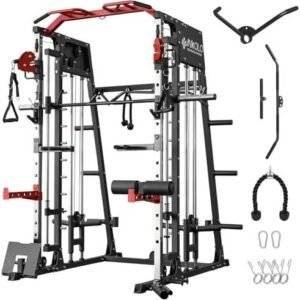Introduction: A
In the fast-paced world we inhabit today, the quest for holistic well-being has never been more pertinent. As individuals strive to achieve a balanced lifestyle, the intersection of physical fitness and mental well-being increasingly gains prominence. Mind-body fitness training programs — which deftly integrate physical exercises with mental and emotional awareness — have emerged as valuable frameworks for enhancing overall health. This comprehensive guide delves into the multifaceted realm of mind-body fitness, exploring its foundational principles, various methodologies, and the science that underpins their efficacy.
From the rhythmic flow of yoga to the meditative practices of tai chi, mind-body fitness encompasses a diverse spectrum of activities designed to cultivate harmony between the body and mind. Each modality offers distinct benefits, not only promoting physical strength and flexibility but also fostering mental clarity and emotional resilience. This guide aims to demystify the diverse approaches available, equipping readers with the knowledge and tools necessary to select the most suitable training programs for their individual needs and goals.
In the pages that follow, we will investigate the rising popularity of mind-body fitness in contemporary wellness culture, highlighting important evidence-based research that underscores its benefits. We will also provide practical recommendations for integrating these practices into everyday life, ensuring a sustainable commitment to holistic health. Whether you are a seasoned fitness enthusiast, a wellness coach, or someone embarking on a journey to improve your well-being, this guide promises to be an invaluable resource in fostering a deeper understanding of mind-body fitness training programs. Join us as we embark on this transformative exploration, unlocking the potential that lies within the harmonious connection between body and mind.
Table of Contents
- Understanding the Foundations of Mind-Body Fitness Training
- Exploring Diverse Methodologies in Mind-Body Wellness Practices
- Essential Techniques for Integrating Mindfulness with Physical Exercise
- Personalized Strategies for Enhancing Mind-Body Connection Through Fitness
- Concluding Remarks
Understanding the Foundations of Mind-Body Fitness Training
At the core of mind-body fitness training lies an understanding of how physical activity influences mental and emotional well-being. This approach recognizes the intricate connection between the mind and body, emphasizing that holistic fitness involves not only improved physical capabilities but also enhanced mental clarity, emotional stability, and stress management. Key principles of this philosophy include:
- Mindfulness: Cultivating awareness of the present moment to enhance the connection between movement and intention.
- Breath control: Utilizing breath as a tool for calming the mind and enhancing physical performance.
- Alignment: Focusing on proper bodily alignment to prevent injuries and promote efficient movement.
Various techniques form the foundation of mind-body fitness, with practices like yoga, Pilates, tai chi, and qigong leading the way. These disciplines not only improve physical strength and flexibility but also promote mental resilience through their structured yet fluid movements. For instance, yoga incorporates asanas and meditation while Pilates focuses on core strength and endurance. A comparison of these practices can help prospective participants understand their unique benefits:
| Practice | Main Focus | Benefits |
|---|---|---|
| Yoga | Flexibility & Mindfulness | Improved balance, stress reduction, enhanced focus |
| Pilates | Core Strength | Increased stability, posture enhancement, injury prevention |
| Tai Chi | Gentle Movement | Promotes circulation, reduces anxiety, improves coordination |
| Qigong | Energy Flow | Boosts vitality, encourages relaxation, enhances mental acuity |
Exploring Diverse Methodologies in Mind-Body Wellness Practices
Diverse methodologies in mind-body wellness practices offer a wealth of approaches to enhance emotional and physical health. These practices bridge the gap between the mind and body, promoting a holistic understanding of well-being. Some popular methodologies include:
- Yoga: A practice that integrates physical postures, breathing techniques, and meditation.
- Meditation: Techniques to refine focus, ease stress, and foster a deeper connection to self.
- Tai Chi: A martial art known for its slow, flowing movements that cultivate balance and relaxation.
- Mindfulness: The act of being present and aware in each moment, enhancing mental clarity and emotional regulation.
Each of these methodologies brings unique benefits and can be tailored to fit individual needs and goals. For instance, individuals seeking to improve flexibility and strength may gravitate towards yoga, while others looking to reduce anxiety might prefer mindfulness practices. Here’s a quick comparison table highlighting key aspects:
| Methodology | Main Focus | Benefits |
|---|---|---|
| Yoga | Physical & Spiritual | Improves flexibility, strength, and mental resilience |
| Meditation | Mental Clarity | Enhances focus, reduces stress |
| Tai Chi | Movement & Balance | Promotes relaxation, improves posture |
| Mindfulness | Present Awareness | Boosts emotional regulation, decreases anxiety |
Essential Techniques for Integrating Mindfulness with Physical Exercise
Integrating mindfulness into physical exercise can significantly enhance both physical performance and mental well-being. One of the fundamental techniques is to focus on your breath. By paying attention to your inhalation and exhalation, you can cultivate a deeper connection between your body and mind. During each exercise, try to synchronize your movements with your breath; inhale during preparation and exhale while exerting force. This not only improves your focus but also helps in maximizing your strength and endurance. Additionally, incorporating body scans before or after workouts can further anchor your awareness in the present moment. Take a few minutes to mentally check in with different parts of your body, acknowledging any tension or discomfort and consciously relaxing those areas.
Another effective method is to practice mindful observation while exercising. Instead of fixating on your performance metrics or perceived outcomes, shift your attention to the sensations experienced in your body. Recognize the feeling of muscles contracting and relaxing, the rhythm of your heart, and the texture of the ground beneath your feet. You can also create a mind-body connection journal, where you jot down reflections post-workout. This practice not only reinforces your mindfulness but also highlights areas of progress or challenge. Here is a simple table that outlines activities you can engage in to enhance mind-body integration:
| Activity | Mindfulness Technique |
|---|---|
| Yoga | Focus on breath and alignment |
| Running | Mindful pacing and breath awareness |
| Weightlifting | Body scan during rest periods |
| Swimming | Water sensations and breath control |
Personalized Strategies for Enhancing Mind-Body Connection Through Fitness
To cultivate a deeper connection between the mind and body, consider implementing customized fitness strategies that resonate with your individual goals and preferences. This process begins with self-assessment, where you identify not only your physical fitness levels but also your emotional and mental states. Reflecting on activities that inspire joy can drive the focus of your program. Incorporating practices such as yoga, Pilates, or tai chi not only engages muscles but also enhances flexibility while promoting mental clarity and relaxation. The essence of these activities is to encourage mindfulness; breathing techniques and movement synchronization can transform a workout into a reflective practice.
Furthermore, leveraging technology can significantly enhance your journey. Tracking your progress through fitness apps or journals allows you to visualize your growth, providing motivation and positive reinforcement. Here are some innovative strategies you can incorporate:
- Breath Awareness: Prioritize breath work before, during, and after workouts to heighten awareness.
- Mindful Movement: Engage in workouts that require focus on body alignment and movement sequences.
- Regular Reflection: Set aside time post-exercise to reflect on how your body feels and its impact on your mood.
| Strategy | Benefits |
|---|---|
| Yoga | Enhances flexibility and reduces stress |
| Mindful Breathing | Increases focus and calms the mind |
| Strength Training | Boosts confidence and promotes body awareness |
Concluding Remarks
mind-body fitness training programs represent a holistic approach to wellness that transcends conventional exercise routines. By integrating physical movement with mental awareness and emotional balance, these programs offer a multifaceted strategy for achieving optimal health. Whether you are a seasoned athlete or a beginner seeking a sustainable and fulfilling path to fitness, the diverse offerings outlined in this guide provide essential tools and insights to elevate your practice.
As you explore various disciplines, from yoga and Pilates to Tai Chi and meditation-based workouts, remember that the journey is as valuable as the destination. Mind-body fitness not only nurtures your physical capabilities but also fosters a profound connection between the mind and body, promoting overall well-being. By selecting programs that resonate with your personal goals and preferences, you can cultivate a routine that enhances flexibility, strength, and mental clarity.
As you embark on this transformative journey, we encourage you to remain inquisitive and patient with yourself. Embrace the process, stay committed to your practice, and take the time to listen to your body’s signals. Over time, you will likely find that the benefits extend beyond physical health, enriching your emotional resilience and mental sharpness in numerous ways.
We hope this comprehensive guide serves as a valuable resource and inspires you to make informed choices as you delve into the world of mind-body fitness. As you integrate these practices into your life, you will not only achieve your fitness goals but also embark on a lifelong journey of personal growth and self-discovery. Here’s to a healthier, more balanced you.





